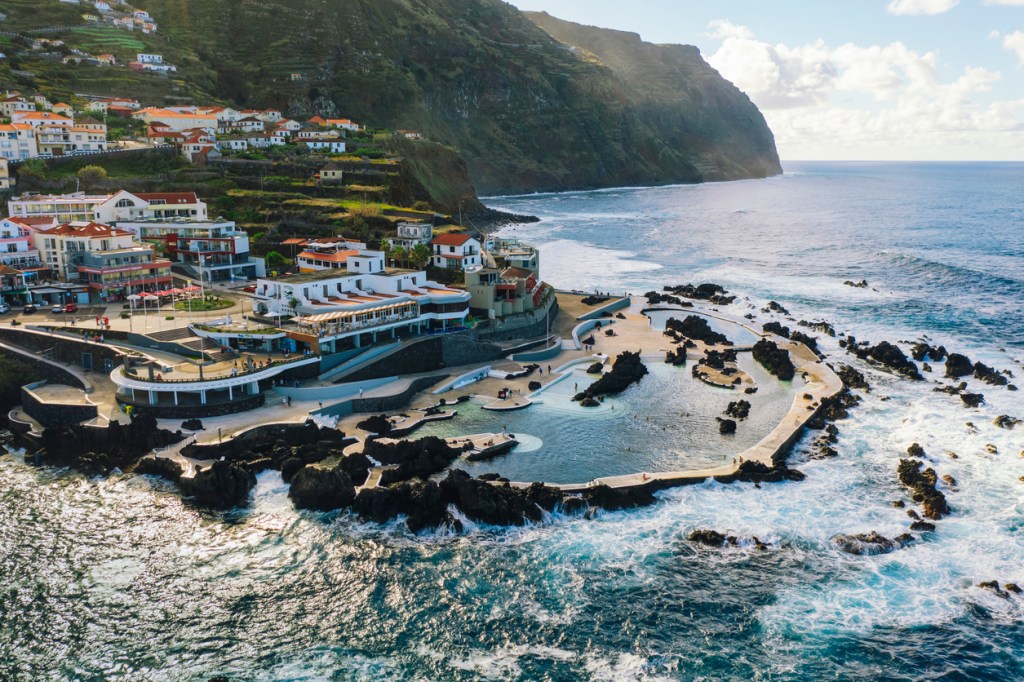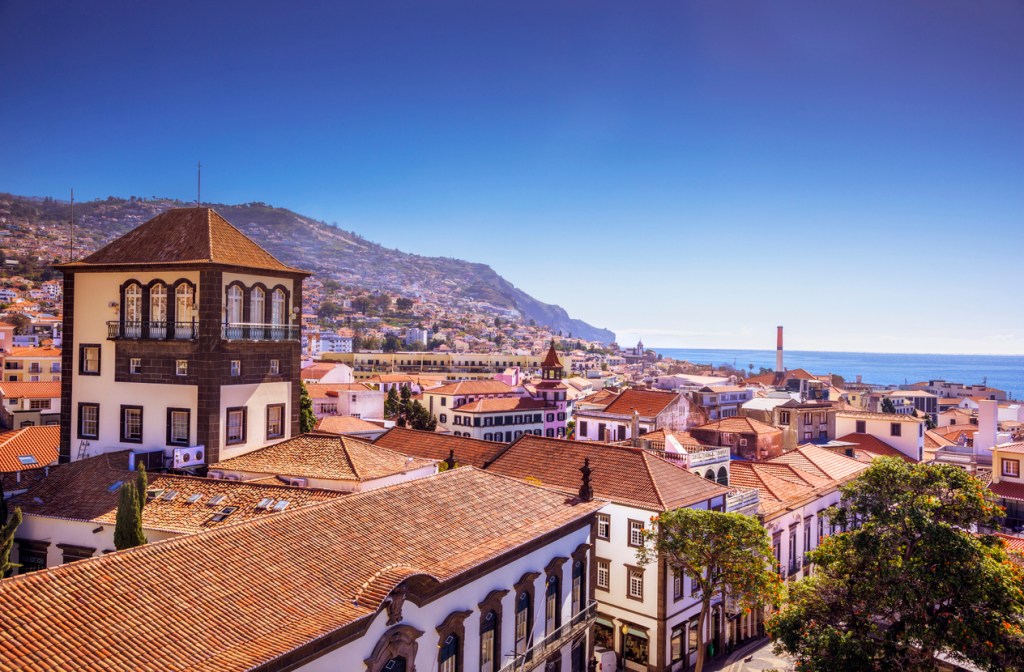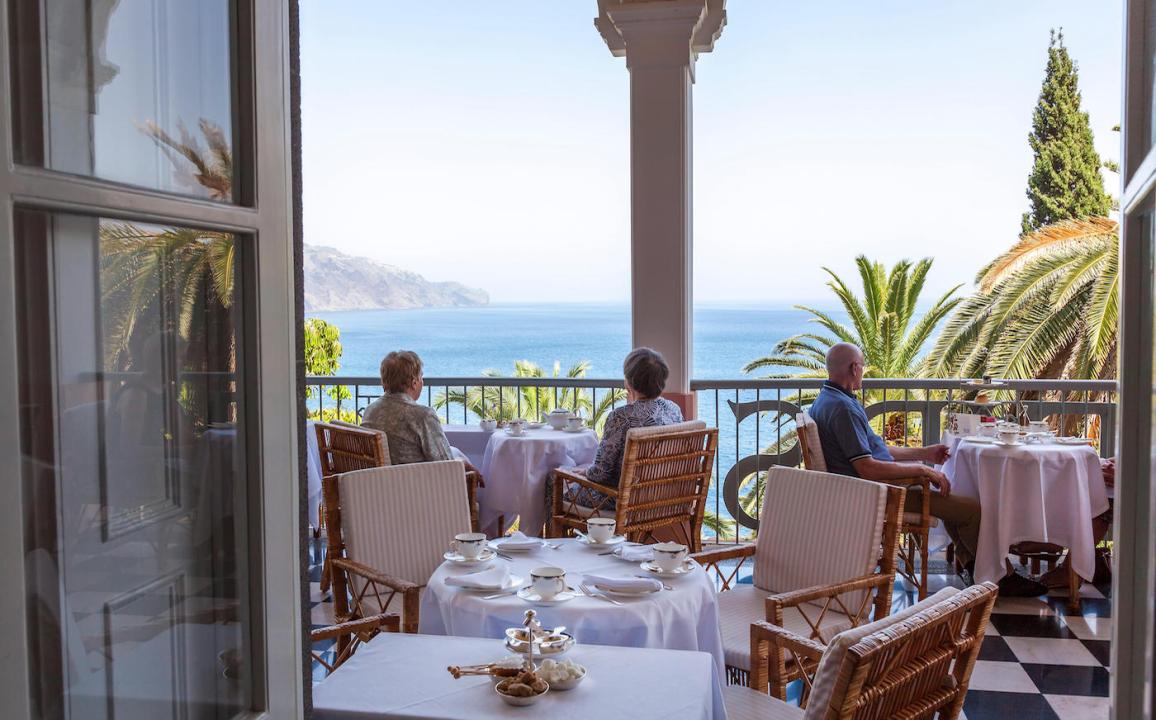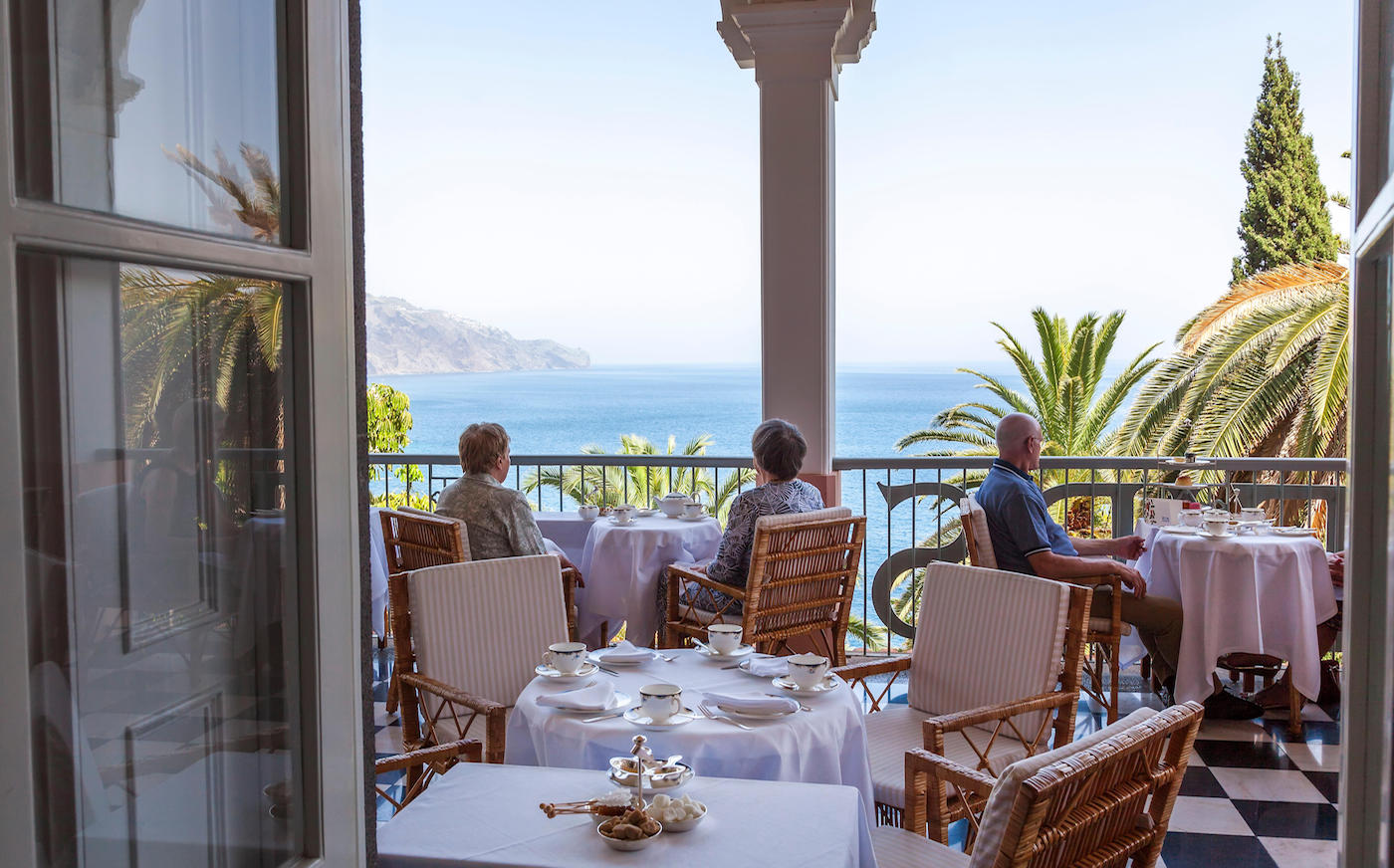Three days on Madeira can feel like a week – not because time drags, but because the place is so varied with its many different weathers. From the aeroplane you could be circling over the Caribbean, an impression given by the lush scrambling vegetation and orange rooftops jostling up the mountains. We landed at Cristiano Ronaldo airport, named for the most famous living Madeiran. Having surveyed the situation from the air, I wondered how he found anywhere flat enough for football.
We kicked off with a puncha – Madeira’s ubiquitous rum punch, sweetened with orange and honey. It was our duty and pleasure to try it
We headed first for the sunny southwest, to Quinta da Vinhas, a wine-growing farm above the seaside resort of Calheta. Here, the ancient red farmhouse dating back to the 1680s has been beautifully restored as a hotel, with views across vineyards (74 grape varieties) and down to the sea. The garden is scented tropicana: plumbago and hibiscus and bougainvillea. A rooster crowed nearby. The interiors are simple and whitewashed, with ancient stone and brick floors and the doors and windows painted in some ideal blue. After a glass of chilled, raisiny madeira and a dinner of fish baked in fig leaves at the hotel’s restaurant, I repaired to my room on the ground floor of the hotel. Here there was a reminder of the rustic setting, as centipede visitors curled themselves under the terrace door all night, exiting again at dawn. They seemed harmless types.
In the morning the sun shone hotly and we were taken to Calheta, where there was time for a swim in the sea before the next fish feast. To accompany the fish skewers and fish stew we ordered a plateful of limpets, a local speciality. They arrived piled loose in their shells, large and small, golden or black, and with a unique smoky flavour beneath the garlic and butter.
Madeira is like Swiss cheese, they say: riddled with holes. Owing to its geography – the volcanic rock rising steeply from the Atlantic – road tunnels have been carved out all over the island, 150 or so in total, many dating back a century or more. Some replace the narrow old tracks that used to wind along the coast, and many more cut through mountain passes inland.
In a Land Rover driven by the lovely enthusiastic Diogo, of Adventure Madeira tours, we went from cove to cove on the wild northern coast, where the sand is volcanic grey. At Porto Moniz, a collection of large lidos have been created from rockpools; waves crash over the walkways and sweep the waters.

The highest point of the island is 1800m, and there are lateral strips of different microclimates: I was reminded of Hawaii’s Big Island. After the coastal tour, we whooshed through tunnels into the island’s interior, going from the sea-level terraces of bananas, sugarcane, vines and figs up through deciduous woods of oak, chestnut and walnut, and groves of incredibly fresh-smelling eucalyptus and bay, to the mist-clad, Unesco-protected Laurisilva, a subtropical evergreen forest where water droplets dangle from the laurel needles (condensation provides most of the island’s water, and droughts are unknown). Higher still, we wandered around the misty Til wood in the volcano’s extinct crater, a mysterious and cosmic place, and finally we were on the highest plateau, up with the windfarms and looking down on cloud. The gradients of some of the hills along the way were fairly shocking: Diogo telling us to hold on tight as he revved the engine and roared up tracks that felt almost vertical. It might have taken some of the fun out to know in advance that the old Land Rover had a special extra-low gearbox.
Funchal was our destination that evening – the Castanheiro Boutique Hotel, bang in the centre near the cathedral. The town is delightful, striking with its black and white architecture, decorative cobbles, and trees with bright pink or orange flowers. You can see the Portuguese elements, in the blue and white tiled shopfronts, for instance, but the palms and banana trees in the parks again give the place a tropical air.

Another evening, another seafood dinner. At Peixaria, a new restaurant in the fish market, we kicked off with a puncha – Madeira’s ubiquitous rum punch, sweetened with orange and honey. It was our duty and pleasure to try it. Grilled prawns and salt cod croquetas followed, along with a brilliantly fresh whole red snapper and imperador, accompanied by very good Esporao reserve, from Portugal.
Day two (but how was it only day two?) dawned to the sound of drumming rain. We were due to walk along one of the levadas, the little canals that distribute water all over the island. It’s an incredible centuries-old irrigation system. We headed west once more and the sun made a fleeting appearance, but as we wound uphill the car was enveloped in mist. By the time we disembarked, the rain was again relentless. Never mind: the intense greenery, the vapour on our faces, the sounds of dripping leaves and the gurgling levada, as we ascended, were so refreshing that any after-effects of the puncha and Esporao were washed away. At the waterfall that was our destination, droplets hung in the air and all around water roared and trickled. We filled our bottles from rivulets that poured down the moss-lined mountainside – you could taste the minerals.
Soaked through, it was a joy to return to the hotel for a session at their Til spa before dinner, which turned out to be the grand finale. At Akua, central Funchal, we sat along the bar and watched the bustle of chefs squeezing blobs of emulsion onto plates, blowtorching sardines and balancing razor clams. The whole meal was delicious and unusual, of Michelin star quality (perhaps it is a matter of time for the head chef, Julio Pereira). Highlight was a pudding of white chocolate mousse with passion fruit and caramelised black olive paste, though you’d need to try it to understand.
The last day! We were supposed to surf, but the waves were wrong. So a wander along Funchal seafront (Reid’s pink palace perched on a promontory at the far end), a trip up the cable car to view the town from above, and lunch at the Museum Café. On the plane home, I reflected that we really must have seen everything there is to see of what is, after all, a not very large island. But I’d be happy to go back and check.







Comments